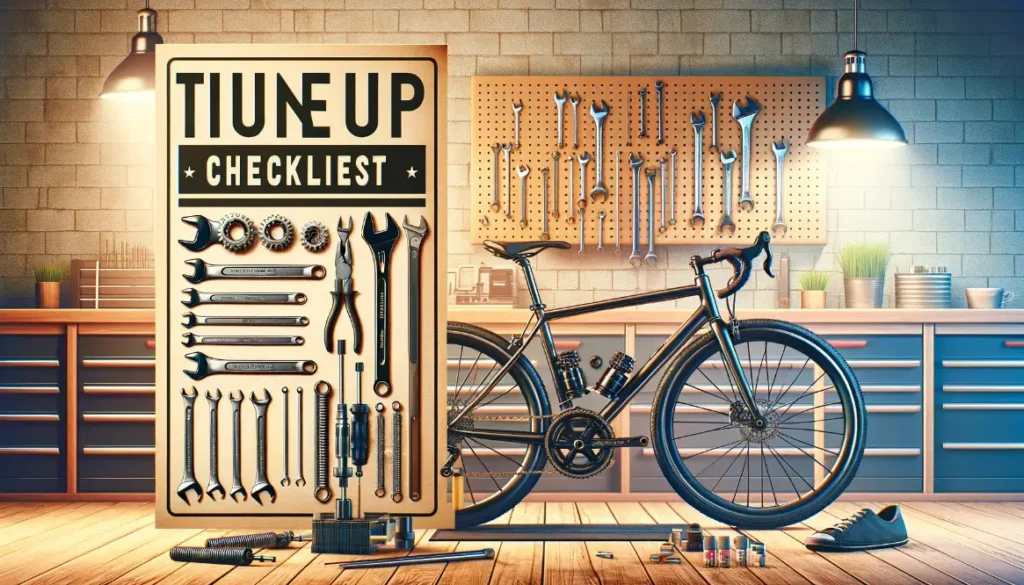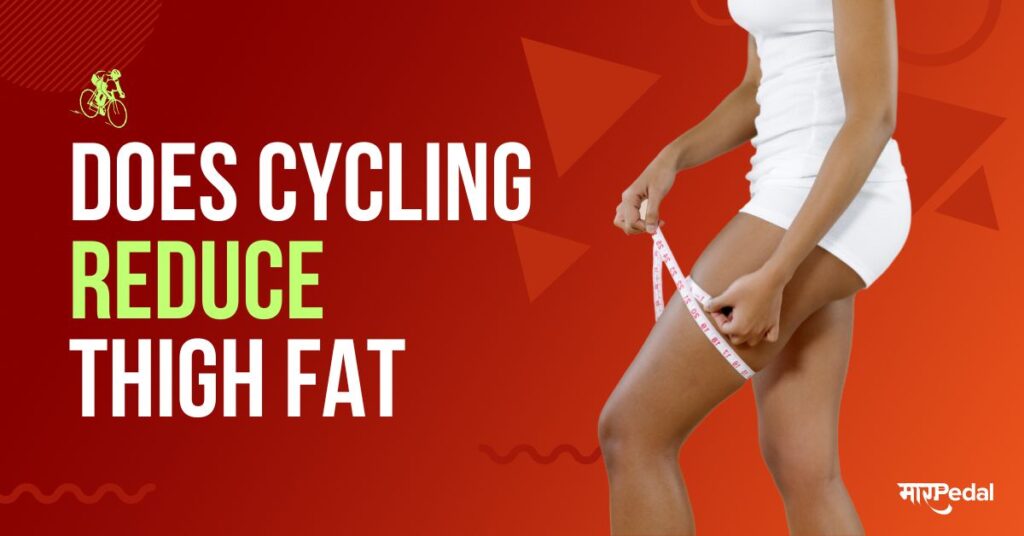
Deciding whether to tune up your bike yourself or take it to a professional can be difficult. This comprehensive bicycle tune up checklist covers the key areas DIYers can inspect and adjust for optimal performance.
Keeping your bike in top working order through regular tune ups is important for safety, performance and longevity. A proper tune up consists of cleaning, lubricating and adjusting various components to reduce friction and wear.
Bicycle Tune-Up Checklist
Below is a detailed outline of the bicycle tune-up checklist, comprising 25 engaging headings and subheadings, designed to cover all aspects of maintaining your bicycle.
| Tune-up Checks | Description |
| 1. Inspecting the Frame and Components | – Checking for cracks and damages- Cleaning the frame |
| 2. Cleaning and Lubricating the Chain | – Using the right lubricant- Removing dirt and debris |
| 3. Checking and Adjusting Brakes | – Testing brake responsiveness- Adjusting brake pads |
| 4. Inspecting and Inflating Tires | – Looking for wear and tear- Proper tire pressure |
| 5. Inspecting and Adjusting Wheels | – Checking for trueness- Adjusting spoke tension |
| 6. Checking and Adjusting Gears | – Testing gear shifts- Adjusting derailleur |
| 7. Examining and Adjusting Handlebars | – Ensuring proper alignment- Adjusting handlebar height |
| 8. Inspecting and Adjusting Seat and Saddle | – Checking for damage- Adjusting saddle position |
| 9. Examining and Adjusting Pedals | – Ensuring smooth rotation- Tightening pedals |
| 10. Inspecting and Greasing Bearings | – Checking headset and bottom bracket bearings- Greasing bearings |
| 11. Checking and Adjusting Cables | – Testing cable tension- Adjusting cable position |
| 12. Examining and Adjusting Braking System | – Ensuring even brake pad wear- Adjusting brake levers |
| 13. Inspecting and Cleaning Derailleurs | – Checking for dirt and debris- Cleaning derailleurs |
| 14. Checking and Tightening Bolts and Nuts | – Inspecting for loose components- Tightening hardware |
| 15. Examining and Adjusting the Chainring | – Ensuring proper alignment- Adjusting chainring position |
| 16. Inspecting and Adjusting the Cassette | – Checking for wear- Adjusting cassette |
| 17. Checking and Replacing Brake Cables | – Inspecting for fraying- Replacing worn-out cables |
| 18. Examining and Adjusting the Bottom Bracket | – Checking for play- Adjusting bottom bracket |
| 19. Inspecting and Adjusting the Headset | – Checking for smooth steering- Adjusting headset |
| 20. Checking and Replacing Brake Pads | – Inspecting for wear- Replacing worn brake pads |
| 21. Inspecting and Replacing Worn Tires | – Checking tread depth- Replacing worn-out tires |
| 22. Examining and Replacing Worn Chains | – Measuring chain wear- Replacing stretched chains |
| 23. Checking and Replacing Worn Pedals | – Inspecting for play- Replacing worn pedals |
| 24. Inspecting and Replacing Worn Grips and Tape | – Checking for wear- Replacing grips and handlebar tape |
| 25. Final Safety Check and Test Ride | – Double-checking all adjustments- Taking a test ride |
Now, let’s delve into each section of the bicycle tune-up checklist and explore the details to help you maintain your bicycle effectively.
Why Tune Up is Important
Riding a poorly maintained bike leads to inefficient pedaling, difficulty shifting, decreased braking power and higher risk of mechanical failure or accidents. Staying on top of maintenance ensures you get smooth shifts, quick acceleration and reliable stopping power.
What a Tune Up Consists Of
A complete tune up thoroughly cleans the frame, drivetrain and moving parts then adjusts accessories and systems including wheels, brakes, derailleurs and cables. The goal is optimizing function, reducing friction and preventing damage from dirt, rust and wear.
Safety First
Before hitting the road, do some basic safety checks to avoid accidents and breakdowns.
Checking Brakes
Test brakes at various speeds. There should be strong, consistent stopping power without squealing sounds. Center the pads on rims if needed.
Inspecting Wheels and Tires
Check tire pressure and inspect for cuts, bulges or cracks. Give wheels a spin to ensure straight and smooth rotation without wobble.
Ensuring Reflectors Work
Make sure reflectors are clean, straight and securely fastened for visibility to vehicles at night.
Cleaning
While cleaning your bike may seem purely for looks, it actually serves important functional purposes too.
Washing Frame
Use bike detergent and water to thoroughly clean the frame, handlebars and components. This removes dirt that causes premature wear and corrosion.
Cleaning Drivetrain
The drivetrain suffers grime buildup from chain lubricant and road debris attracting more dirt over time. Proper cleaning allows smooth shifting and pedaling.
Lubricating Chain
Wipe the chain down to remove dirt then apply fresh chain lube as friction here directly impacts pedaling efficiency.
Can You Put WD40 on Bike Chain? Read This First! 🛑
Tires and Wheels
Proper inflation and component checks are key to reducing rolling resistance while preventing flats or mechanical issues.
Inflating Tires
Use a gauge to inflate tires to the PSI rating on the sidewalls. Underinflation causes excess friction while overinflation leads to blowouts.
Inspecting Rims
Check rims and spokes for any cracks or deformation which can cause wheels to go out of true leading to braking issues and accidents.
Assessing Tread Depth
Look for worn tread lacking defined grooves as this greatly reduces grip on wet roads. Replace tires lacking sufficient tread depth.
Drivetrain
Adjusting the drivetrain components is critical for smooth, quick shifting across gears whether on flats or hills.
Lubricating Chain
A freshly oiled chain prevents link corrosion and minimizes friction between plates promoting freely spinning cogs and fluid pedaling.
Don’t Let a Long Chain Ruin Your Ride! 🚲 Here’s How to Shorten It
Adjusting Derailleurs
Fine tune the front and rear derailleurs aligning them with each cog allowing clean shifts across the cassette without chain drops.
Checking Cables
Inspect shift cables for kinks or fraying which inhibits smooth gear transitions. Lubricate using light oil for reduced friction through cable housing.
Brakes
Proper brake function is arguably the most important safety element to check, so take time to center the pads and test lever pressure.
Testing Brake Pads
Pads should contact rims squarely with plenty of friction causing strong deceleration without needing the levers pulled to the handlebars.
See also: Squeak No More! Here’s How to Fix a Squeaky Bike Brake
Centering Brake Pads on Rims
Align pads evenly on rim braking surfaces so equal pressure is applied avoiding scraping sounds or pull to one side while braking.
Adjusting Brake Cables
Cables stretch over time reducing lever pull force. Some adjusters allow tightening cables restoring strong pressure with shorter lever movement.
Cockpit
The handlebar area should provide comfortable positioning and shift/brake control through all riding conditions.
Lubricating Brake and Shifter Levers
A drop of light oil on lever pivots maintains smooth pivot action reducing strain to shift and brake.
Cleaning Handlebars
Wipe down handlebars to remove dirt buildup providing better grip and cleanly resting hands during longer rides.
Saddle and Seatpost
An improperly adjusted saddle results in discomfort, restricted pedaling efficiency and even knee pain over time.
Adjusting Saddle Height
Set saddle height allowing a slight leg bend at 6 o’clock pedal position avoiding overstretching or pedal scraping on the downstroke.
Adjusting Saddle Angle
Typically level parallel to the ground, tilt angle lightly up or down if needed to relieve pressure on sensitive areas.
Tightening Bolts
Inspect and tighten saddle clamp bolts and seatpost binder bolt to prevent twisting or slipping during riding.
Pedals and Crankset

Efficient pedaling relies on securely gripping pedals and smoothly spinning crank arms transferring power to the drivetrain.
Lubricating Pedals
Disassemble pedals to inject fresh grease on internal bearings/bushings allowing grippy spinning without seizure or looseness.
Checking Crank Arms
Grab crank arms trying to wiggle side to side checking for any play indicating worn bottom bracket bearings requiring replacement.
Assessing Pedal Clips
Inspect rubber on pedal clips replacing if excessively worn and test clipping in/out action which should be quick releasing without catching.
Steering System
The fork, headset and handlebars work in unison for precise steering control when carving corners or navigating obstacles.
Checking Headset
Straddle the front wheel and pull/push fork to check for headset play. Adjust if loose feeling or tight not allowing smooth steering.
Lubricating Headset
After adjusting, lubricate upper and lower headset bearings with light oil promoting long-lasting smooth rotation.
Centering Handlebars
Align handlebars evenly with front wheel for proper ergonomics and steering control. Tighten bolts preventing unwanted twisting.
Gear Shifting
Clean, adjusted drivetrain components allow fast precision shifts for optimizing cadence over changing terrain.
Adjusting Derailleur Limit Screws
Limit screws prevent overshift keeping the chain safely on cogs. Adjust to allow full cassette/chainring range without throwing the chain.
Indexing Gears
Meticulously trim cable tension and set barrel adjuster so each gear clicks cleanly into place without hesitant/delayed shifts.
Lubricating Shifters
A drop of light oil on shifter internals maintains their mechanical precision for years promoting smooth lever and cable movement.
Frame and Fork
Inspecting for damage and lubricating components prevents failure while suspension should move freely absorbing bumps.
Checking for Cracks and Damage
Carefully inspect the full frame and fork for any cracks, chips or deformation which can dangerously fail when riding.
Assessing Suspension Forks
Compression and rebound should feel smooth and consistent. Maintain lower legs by cleaning then lubricating bushings and Dust seals.
Lights
Proper illumination from bright, reliable lights greatly increases visibility helping avoid accidents when riding at night or in low light.
Testing Front and Rear Lights
Ensure all bike lights activate when cycling or braking. Replace batteries or bulbs immediately if any appear dim or flicker off.
Replacing Batteries
Carry spare CR2032 or AA batteries while riding. Lithium batteries have a 10-year shelf life making them an ideal replacement option.
Rust Protection
Use these tips for preventing and treating any rust protecting your bike’s appearance and structural integrity.
Touching Up Paint Chips
Clean any paint chips then dab touch-up paint on damaged areas preventing moisture reaching vulnerable metal leading to rust.
Applying Rust Inhibitor
Wipe frame with auto rust inhibitor after washing. Reapply monthly for added protection from corrosion on internal surfaces.
Bolt and Nut Check
Loose components can dangerously shift or rattle free when riding demanding checking and tightening all nuts and bolts.
Tightening Loose Parts
Feel and visually inspect all accessory mounts, rack/fender bolts, bottle cage bolts etc tightening any found loose with the proper tool.
Replacing Damaged Bolts/Nuts
Carefully check each bolt and nut replacing any with stripped threads, cracks or excessive corrosion which weakens their retention strength.
Chain Lubrication
The chain directly transfers pedal power to the wheel rotation making lubrication vital for maximal efficiency.
See also: Calculate Bicycle Chain Length
Proper Lubricants to Use
Use quality bicycle chain oil or wax allowing penetration between inner links with periodic reapplication for minimal friction.
How Often to Lubricate
Clean then relube the chain every 300-500 miles or when links appear dry. Riding in wet/muddy conditions demands more frequent lubrication.
Brake and Shifter Adjustments
Proper lever sensitivity and derailleur alignment are needed for smoothly stopping and shifting across gears.
Brake Centering and Pad Adjustments
Center each brake pad evenly over the wheel rim so they contact evenly for straight confident stops.
Derailleur Adjustments
Set limit screws and fine tune cable tension eliminating hesitant shifting and avoiding throwing the chain off gears when cornering.
Tire Tread and Pressure
Maintaining inflation pressure and sufficient tread depth promotes grip essential for controlled handling in all conditions.
Recommended Tire Pressure
Inflate tires to the PSI recommended on the sidewalls based on your weight and riding preference for grip vs. lower rolling resistance.
When to Replace Worn Tires
Look for tread groove depth under 2mm as limited tread impairs wet braking. Some tires have wear indicators signaling replacement time.
Cleaning and Polish
While keeping your bike shiny looks nice, cleaning and polishing also reduces long-term corrosion and wear.
Frame Cleaning Tips
Gently wash with specialized bicycle soap or diluted mild detergent using a soft brush lifting road grime from crevices.
Recommended Polishes
Apply bike polish containing protective Carnauba wax softly buffing paint for brilliant shine while guarding against UV damage.
Smooth Shifting
Crisp gear transitions rely on proper derailleur, cables, housings and lever condition for years of confident shifting.
Cable Lubrication
Light oil inside cable housing reduces friction as hardened housing and inner cables attract contaminants over time hindering shift precision.
Limit Screw Adjustment
With perfect cable tension, set limit screws to prevent over-shift without limiting needed gear range size for varied terrain.
Squeaks and Creaks
Locate any annoying squeaks or creaks and lubricate joints to silence noises and reduce wear promoting quiet smooth function.
Locating Sources of Noise
Systematically isolate areas by cleaning sections while testing to pinpoint exactly where sounds originate from on your bike.
Lubricating Joints
Lubricate indicated creaky pivot points using penetrating oils and grease promoting silent operation and longevity.
Upgrade Opportunities
Consider some component upgrades providing meaningful performance gains adding modern tech and riding enjoyment.
New Wheels
Quality wheelsets feature durable seamless rim construction, fast engaging hubs and may include tubeless tire compatibility.
Composite Pedals
Nylon or carbon pedal bodies shave weight while the extra grippy platform offers sure-footed power transfer.
Suspension Seat Post
Easy upgrade adding bump absorption great for hardtails with some lever controlled compression options available.
Do-It-Yourself vs Professional Service
Some basic maintenance you can easily handle yourself while advanced repairs often demand shop tools and expertise.
Complex Jobs for Professionals
Leave major jobs like headset/bottom bracket replacement and wheel truing/building to experienced mechanics with special tools.
Basic Tasks You Can Do
This tune up checklist covers numerous fundamental adjustments from brake pads to derailleurs well within reach of home mechanics.
Maintaining Your Investment
Regularly and properly caring for your bike extends its lifespan maintaining safety, performance and reliability through endless miles.
Routine Schedule to Follow
Clean frame biweekly while checking function and replacing consumables like brake pads before they are fully worn helps prevent damage.
Extending Bike Lifespan
Avoid waiting until things break by performing basic tune up adjustments allowing components to operate as designed lasting for many trouble-free years.
Bicycle Tune Up Checklist FAQs
How often should you tune up a bike?
Thoroughly tune up your bike every six months inspecting all components or after roughly 300-500 miles adjusting parts and lubricating as needed. The frequency depends on riding conditions and how much you rely on your bike’s performance.
What tools do you need for a bike tune up?
Common tools include hex wrenches, screwdrivers, cable cutters, chain lube, degreaser, rags and bike-specific lubricants. Specialty tools like spoke wrenches, bottom bracket tools or a derailleur hanger gauge allow adjusting some components.
Can I tune up my bike myself?
Yes, this tune up checklist covers several basic adjustments and inspections you can absolutely perform at home without advanced mechanical experience using some basic bike tools. Leave more complex component replacements to the pros.
What happens during a professional bike tune up?
Shops thoroughly clean every component then methodically inspect, adjust and lubricate all moving parts ensuring flawless functioning. Many provide tune up service levels from basic adjustments up to complete overhauls rebuilding parts as needed.
How much does a professional bike tune up cost?
Bike shop tune up costs typically range from $60 up to $250 depending on the service level. Basic adjustments average around $80 while higher-end road/mountain bikes may cost over $200 for advanced drivetrain cleaning, precision tuning and parts replacements.
Conclusion
While modern bikes are quite reliable, periodic at-home maintenance checks save money and ensure safety by catching issues before they cause breakdowns or accidents on your next ride. Simply follow this bicycle tune up checklist inspecting key areas adjusting accessories as needed.






